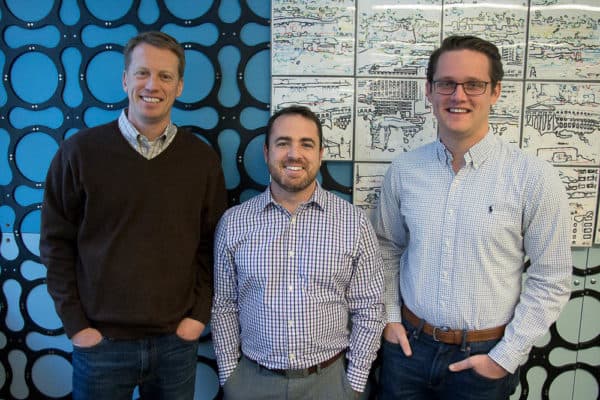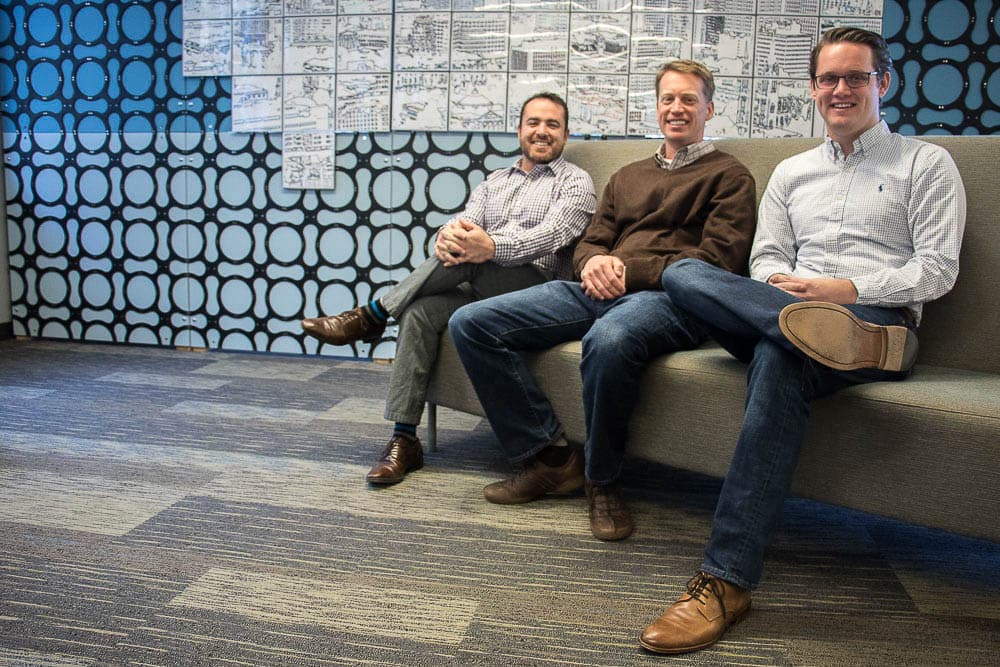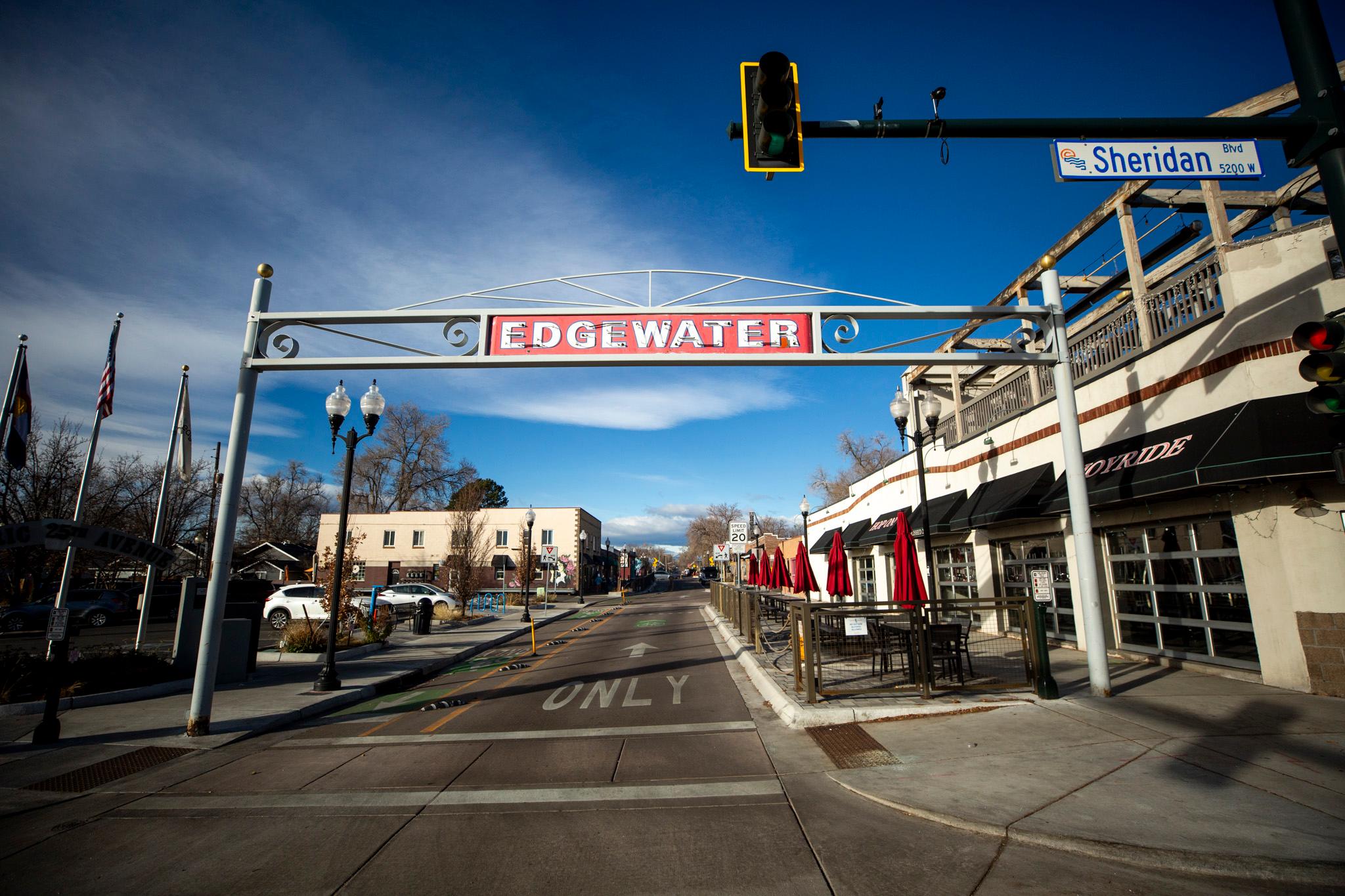STARTUP OF THE WEEK: EMSRELAY

In this series, we visit Denver-metro, Boulder and Rocky Mountain region startups. Contact [email protected] to be considered.
During medical emergencies, time is of the essence. And Mike Kobneck, founder and COO of EMSRelay is on a mission to streamline emergency services, granting hospital workers just a few more minutes to potentially save a life.
EMSRelay is an app, designed for hospitals, to help EMS paramedics make the most of the little time they have.
Statistically speaking, you probably aren't an EMS paramedic, but you've probably seen a show about it (ER, anyone?), been to an emergency room with a loved one, or even had a medical emergency yourself.
And as you've well seen, emergency rooms are all sorts of chaotic. That's because, as Kobneck explained, a lot has to happen in the time between when a patient experiencing an emergency arrives at a hospital and when that patient gets treated by a doctor.
EMSRelay uses a Snapchat-like interface to help EMS workers send information from the ambulance to the hospital in advance of arrival. Paramedics can snap photos of the patient, input minimal wellness information, including vitals, and even convey images of a patient's photo ID.
On average, it takes about four minutes and 48 seconds for a patient to get checked in at the ER, according to a nine month time study of 750 patients EMSRelay conducted at Good Samaritan Hospital. With EMSRelay's app, the patient gets checked in about 12 minutes before arrival.
While that may not seem like that much time, the information EMSRelay enables hospital staff to input ahead of time could allow staff to better prepare for patients.
"If they have a complex case, they can look at [the patient's] past medical history and allergies, medication," Kobneck said. "It really gives doctors a much more complete picture of the patient before they even get there, and, as you can imagine, that really increases the accuracy of care that they can provide."
Not only can the solution improve quality of care, EMSRelay CEO John Woody said the app can help with billing too.
"By getting information, albeit simple, basic drivers license information, to the hospital in advance, they are able to better prepare and then make sure that they are properly billing the patient," Woody said.
And hospitals pay EMSRelay through monthly subscriptions. Pricing tiers are based on the number of ambulance arrivals to the hospital. EMSRelay did not disclose pricing.
The idea for an app that could streamline the patient input process, could only have come from someone who's put in some serious time in the health care field.
Kobneck started working as an emergency medical technician at the age of 18. After 13 years' experience, he founded EMSRelay.
"It's fun to see someone who's been in the industry realize the pain and be passionate enough about the solution to do something about it," Woody said. "Mike walks into an EMS meeting and gets immediate credibility because he's lived it, understands it and they can connect on that passionate level."
One of the immediate barriers to developing the product came from HIPAA compliance. The EMSRelay team is the third party necessary for transferring data, which consists of photos of patients and their personal information, from EMT's in the ambulance to hospital staff.
But where do those photos go? And how can EMSRelay ensure their security? Those are the questions HIPAA needed answered, and EMSRelay had solutions.
The system is end-to-end encrypted, so even the EMSRelay team has no access to it, developer Nathan Egan explained. Once a photo is taken, it is wiped from the phone, transferred to EMSRelay servers and then to the hospital. The servers store the images for 72 hours and then the photos are wiped from their systems, too.
Beyond that, they monitor users, logins and failed login attempts.
EMSRelay launched a beta version of their app in August 2015 at Good Samaritan Hospital in Lafayette.
Using the feedback from staff there, they made subtle improvements and launched a pilot program at Uncompahgre Medical Center in Norwood on Nov. 7.
With Good Samaritan and Uncompahgre, EMSRelay has two very different markets in which to assess the value of their product. For a hospital in an urban market, like Good Samaritan, the value of the product has already been established--it cuts down on chaos and improves registration speed in busy emergency rooms.
For rural health care markets, like the one Uncompahgre serves, the value could be different. Smaller hospitals have a smaller staff, so advanced notice could help them prepare supplies or even call in extra or specialized support for a patient, Woody explained.
At the moment, EMSRelay has teamed up with two hospitals, but the team has a plan to expand use.
"EMS agencies commonly deliver to more than one hospital," Kobneck said. "So when the first hospital says, 'Yes, I want to be on board,' the EMS agency supporting the hospital adopts the product. They also deliver to a second hospital or third hospital so that begins to be an indirect sales force for us."
By early next year, EMSRelay hopes to solidify deals from 13 hospitals in the Denver metro. From there, they are looking to expand, out-of-state and eventually support about 500 hospitals.
"We want large enough a market share to see our product have an impact on communities," Woody said. "That's why Mike started this company, it wasn't about let's make X number of dollars, it was about improving the handoff from ambulances to hospitals."
Founders: Mike Kobneck
Employees: 3
Industry: Health care
Founded: March 13, 2014
Launched: August 3, 2015
Funding: Self-funded
Offices: Home, Commons on Champa
Multimedia business & healthcare reporter Chloe Aiello can be reached via email at [email protected] or twitter.com/chlobo_ilo.
Subscribe to Denverite’s newsletter here.













